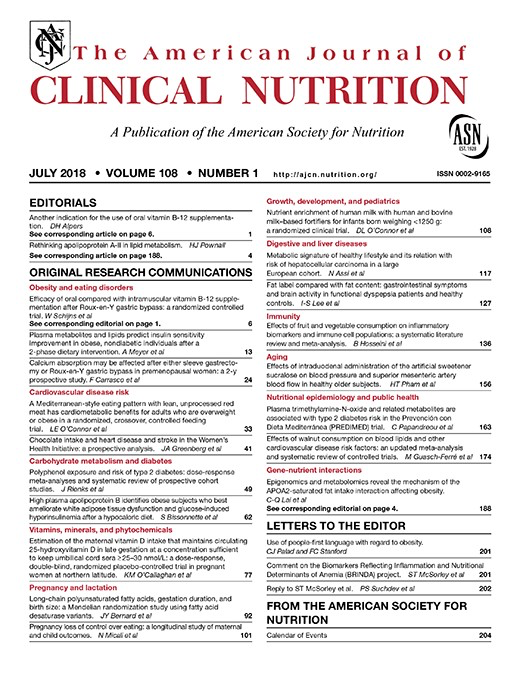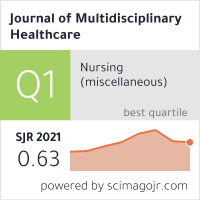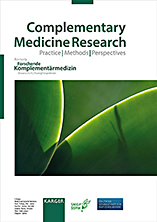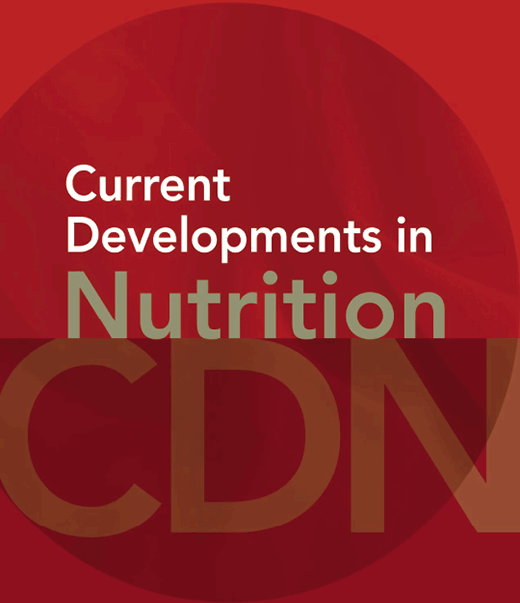Fracture Risk
How to submit an article:
- Registered users can submit any published journal article that has a unique DOI (Digital Object Identifier) name or link to Research Hub.
- For example, you can paste the full DOI link:
https://doi.org/10.1109/5.771073or just the DOI name:10.1109/5.771073into the field above and click submit. - The person who is first to submit a valid article to Research Hub will forever be credited for it, and every article submission earns you +6 Research Points.
Published research studies are articles that present the findings of original research that has undergone a peer-review process and has been made publicly available in scholarly journals, books or other media.

Effects of kidney tonic herbs for primary osteoporosis: A systematic review and meta-analysis
2023 Oct 27 Medicine Li W, Ye B, Huang Z, Zhou H, Feng J, Chen Q, et al.
Systematic Review Meta-Analysis Osteoporosis Kidney-Tonifying Herbs Fracture Risk Bone DensityKidney tonic herbs may enhance bone density and reduce fracture risk in patients with primary osteoporosis.

Prunes preserve hip bone mineral density in a 12-month randomized controlled trial in postmenopausal women: the Prune Study
2022 Oct The American Journal of Clinical Nutrition De Souza MJ, Strock NCA, Williams NI, Lee H, Koltun KJ, Rogers C, et al.
Randomised Controlled Trial Bone Mineral Density PlumA daily intake of 50 grams of prunes can maintain hip bone density in postmenopausal women, potentially reducing hip fracture risks.

A Comparison of the Risk of Fracture in Rheumatoid Arthritis Patients with and without Receiving Chinese Herbal Medicine
2021 Dec Journal of Multidisciplinary Healthcare Liao HH, Livneh H, Chung YJ, Lin CH, Lai NS, Yen HR, et al.
Cohort Study Autoimmune Disease Chinese Herbal Medicine Bone Fracture Rheumatoid arthritis (RA)Adding Chinese herbal medicines to routine treatment was found to be related to lower fracture risk in rheumatoid arthritis patients.

Soy Foods and the Risk of Fracture: A Systematic Review of Prospective Cohort Studies
2021 Sep 21 Complementary Medicine Research Akhavan Zanjani M, Rahmani S, Mehranfar S, Zarrin M, Bazyar H, Moradi Poodeh B, et al.
Systematic Review Osteoporosis Soybean Fracture RiskSoy food intake, particularly fermented soy products, appear to have a protective effect on fracture risk among Asian women, especially in early menopause.

Effect of Whole Blueberry on Bone Biomarkers in Postmenopausal Women with Mild-to-Moderate Bone Loss (P01-029-19)
2019 Jun Current Developments in Nutrition Du C, Norris K, Hanlon Y, Panth P, Imrhan V, Vijayagopal P, et al.
Blueberry consumption showed modest protective effects on bone metabolism, including increased bone formation and decreased fracture risk and inflammation, although no changes in bone density were observed.
Randomised Controlled Trial Clinical Study Postmenopausal BlueberryResearch insights are moderated by the Research Hub team and offer an at-a-glance overview of interesting research findings.

2023 Medicine
Kidney tonic herbs may enhance bone density and reduce fracture risk in patients with primary osteoporosis.
Systematic Review Bone Density Kidney-Tonifying Herbs Osteoporosis
Effects of kidney tonic herbs for primary osteoporosis: A systematic review and meta-analysis
Li W, Ye B, Huang Z, Zhou H, Feng J, Chen Q, et al.

2022 The American Journal of Clinical Nutrition
A daily intake of 50 grams of prunes can maintain hip bone density in postmenopausal women, potentially reducing hip fracture risks.
Randomised Controlled Trial Bone Mineral Density Plum
Prunes preserve hip bone mineral density in a 12-month randomized controlled trial in postmenopausal women: the Prune Study
De Souza MJ, Strock NCA, Williams NI, Lee H, Koltun KJ, Rogers C, et al.

2021 Journal of Multidisciplinary Healthcare
Adding Chinese herbal medicines to routine treatment was found to be related to lower fracture risk in rheumatoid arthritis patients.
Cohort Study Autoimmune Disease Bone Fracture Chinese Herbal Medicine Rheumatoid arthritis (RA)
A Comparison of the Risk of Fracture in Rheumatoid Arthritis Patients with and without Receiving Chinese Herbal Medicine
Liao HH, Livneh H, Chung YJ, Lin CH, Lai NS, Yen HR, et al.

2021 Complementary Medicine Research
Soy food intake, particularly fermented soy products, appear to have a protective effect on fracture risk among Asian women, especially in early menopause.
Systematic Review Osteoporosis Soybean
Soy Foods and the Risk of Fracture: A Systematic Review of Prospective Cohort Studies
Akhavan Zanjani M, Rahmani S, Mehranfar S, Zarrin M, Bazyar H, Moradi Poodeh B, et al.
Review Articles
Review articles summarise and critically evaluate the current state of research on a specific topic or field by synthesising multiple primary research studies.

Effects of kidney tonic herbs for primary osteoporosis: A systematic review and meta-analysis
2023 Oct 27 Medicine Li W, Ye B, Huang Z, Zhou H, Feng J, Chen Q, et al.
Systematic Review Meta-Analysis Osteoporosis Kidney-Tonifying Herbs Fracture Risk Bone DensityKidney tonic herbs may enhance bone density and reduce fracture risk in patients with primary osteoporosis.

Soy Foods and the Risk of Fracture: A Systematic Review of Prospective Cohort Studies
2021 Sep 21 Complementary Medicine Research Akhavan Zanjani M, Rahmani S, Mehranfar S, Zarrin M, Bazyar H, Moradi Poodeh B, et al.
Systematic Review Osteoporosis Soybean Fracture RiskSoy food intake, particularly fermented soy products, appear to have a protective effect on fracture risk among Asian women, especially in early menopause.
Clinical Trials
Clinical trials are research studies that involve people and are conducted to evaluate the safety and efficacy of new treatments or interventions, such as drugs, medical devices, or behavioural therapies.

Prunes preserve hip bone mineral density in a 12-month randomized controlled trial in postmenopausal women: the Prune Study
2022 Oct The American Journal of Clinical Nutrition De Souza MJ, Strock NCA, Williams NI, Lee H, Koltun KJ, Rogers C, et al.
Randomised Controlled Trial Bone Mineral Density PlumA daily intake of 50 grams of prunes can maintain hip bone density in postmenopausal women, potentially reducing hip fracture risks.

Effect of Whole Blueberry on Bone Biomarkers in Postmenopausal Women with Mild-to-Moderate Bone Loss (P01-029-19)
2019 Jun Current Developments in Nutrition Du C, Norris K, Hanlon Y, Panth P, Imrhan V, Vijayagopal P, et al.
Blueberry consumption showed modest protective effects on bone metabolism, including increased bone formation and decreased fracture risk and inflammation, although no changes in bone density were observed.
Randomised Controlled Trial Clinical Study Postmenopausal BlueberryStudy Protocols
Published study protocols are detailed plans that outline the objectives, methodology, statistical analyses, and organisation of a research study that have been made publicly available for others to review and use as a reference.
Presentation Slides

Systematic Review
Kidney tonic herbs may enhance bone density and reduce fracture risk in patients with primary osteoporosis.
Li W, Ye B, Huang Z, Zhou H, Feng J, Chen Q, Huang H, Meng S, Qie F, Shi X.

Randomised Controlled Trial
A daily intake of 50 grams of prunes can maintain hip bone density in postmenopausal women, potentially reducing hip fracture risks.
De Souza MJ, Strock NCA, Williams NI, Lee H, Koltun KJ, Rogers C, Ferruzzi MG, Nakatsu CH, Weaver C

Cohort Study
Adding Chinese herbal medicines to routine treatment was found to be related to lower fracture risk in rheumatoid arthritis patients.
Liao HH, Livneh H, Chung YJ, Lin CH, Lai NS, Yen HR, Tsai TY

Systematic Review
Soy food intake, particularly fermented soy products, appear to have a protective effect on fracture risk among Asian women, especially in early menopause.
Akhavan Zanjani M, Rahmani S, Mehranfar S, Zarrin M, Bazyar H, Moradi Poodeh B, Zare Javid A, Hosseini SA, Sadeghian M
Executive Summary
Write an executive summary in the form of a blog article on the topic of "Research into Chinese medicine treatment for Fracture Risk" summarising the research below and using language that can be easily understood by patients and avoiding medical jargon using a professional and caring tone of voice.
Write an executive summary in the form of a blog article on the topic of "Researched Chinese medicine treatments for Fracture Risk" summarising the research below in an objective and easy to understand way, and using language that can be easily understood by patients. Group the article into Chinese medicine treatments first, followed by nutrition and other treatments. Avoid using medical jargon and use a professional and caring tone of voice.
Write me a concise but easy to understand executive summary on the topic of "Chinese medicine treatments for Fracture Risk" based on the following research that I will give you. Your summary should be 2 paragraphs long in Australian English spelling and include references to the studies.
A Systematic Review published in 2023 in the journal Medicine found that Kidney tonic herbs may enhance bone density and reduce fracture risk in patients with primary osteoporosis. This research gathered and analyzed data from 43 randomized controlled trials involving 4349 participants, selected through extensive scrutiny conducted by two researchers. The aim was to evaluate the effectiveness and safety of Kidney tonic herbs in the treatment of primary osteoporosis. A comprehensive search of literature across eight electronic databases was performed up to September 30, 2022. The main focus of these trials was changes in bone mineral density of the lumbar area. The results, obtained through meta-analyses using RevMan 5.3 and Stata 16, indicated that kidney tonic herbs significantly increased bone mineral density in various anatomic sites. Examples of these are the lumbar area, femoral neck, and femoral trochanter. Moreover, the research found a decrease in fracture incidence, with no serious side effects reported. The herbs also showed superior pain relief potential. However, the impact of these herbs on fall incidence needs further exploration.
A Randomised Controlled Trial published in 2022 in the journal The American Journal of Clinical Nutrition found that A daily intake of 50 grams of prunes can maintain hip bone density in postmenopausal women, potentially reducing hip fracture risks. This research was conducted through a single-center, parallel-arm, randomized controlled trial over the course of a year. Postmenopausal women were randomly assigned into three groups - control, 50 grams of prunes, and 100 grams of prunes - and their bone mineral density (BMD) was assessed every 6 months. Secondary measurements included an observation of changes in bone biomarkers. Compliance and retention of participants were high particularly at the 50-gram dosage. In assessing the effects of prunes on bone health, the findings showed a distinct interaction between the amount of prune intake and bone mineral density in the hip region. Specifically, it indicated that consumption of 50 grams of prunes daily led to a preservation of hip BMD after 6 months, an effect which was still apparent after a year. Despite a higher dropout rate and less impact on BMD, the 100-gram prune group, when combined with the 50-gram group, presented stability in the FRAX score, which measures the risk of hip fractures.
A Cohort Study published in 2021 in the journal Journal of Multidisciplinary Healthcare found that Adding Chinese herbal medicines to routine treatment was found to be related to lower fracture risk in rheumatoid arthritis patients. This is the largest population-based cohort study based on Taiwan's national health database designed to determine the association between the use of CHMs and the risk of incident fracture in RA patients. Longer duration of incorporating CHMs into routine treatment for RA patients was found to significantly reduce the risk of fracture by 53%. Results of this study may serve as a reference to help healthcare providers when planning and implementing therapeutic interventions that seek to improve the overall health of patients with RA. Further prospective randomized trials are recommended to clarify whether the association revealed in this study supports a causal link.
A Systematic Review published in 2021 in the journal Complementary Medicine Research found that Soy food intake, particularly fermented soy products, appear to have a protective effect on fracture risk among Asian women, especially in early menopause. The research team carried out a systematic review of prospective cohort studies investigating the link between soy food intake and fracture risk. The databases searched were PubMed, Scopus, and Embase up to June 2021, and the team narrowed down 695 records to include 5 high-quality cohort studies. These selected studies were mostly conducted in China, Singapore and Japan and varied in their focus on different types of fractures. The dietary intake of soy food was assessed across all studies through face-to-face interviews. In the analysis of the results, a promising relationship was found between the consumption of soy foods and a reduced risk of fractures among Asian women, notably for those in the early stages of menopause or those who consumed fermented soy products. In contrast, the association was not significant among men.
Moderation Tools
Topic
Sign In
Users not signed in are limited to viewing the 5 most recent items of content.